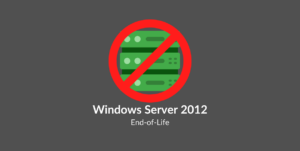Multi-Factor Authentication (MFA): Why It’s Essential for Modern Security Frameworks

In today’s digital landscape, the security of our online accounts has never been more important. Cyber threats lurk around every corner of the internet, and traditional password protection just doesn’t cut it anymore. That’s where multi-factor authentication comes in. MFA has quickly become the gold standard for protecting sensitive information across businesses and personal accounts alike.
What is MFA and Why Should You Care?
Multi-factor authentication (or MFA for short) is a security method that requires users to provide two or more verification factors to gain access to a resource such as an application, online account, or VPN. Rather than just asking for a password, MFA demands additional proof that you are who you say you are.
Think about it this way: If your house only had a simple lock on the front door, it wouldn’t be that hard for someone determined to break in. But what if you added a security system, motion-detecting lights, and maybe even a guard dog? Suddenly, breaking in becomes a much bigger challenge. That’s essentially what MFA does for your digital accounts.
The core principle behind MFA is pretty straightforward. It combines multiple types of authentication factors:
- Something you know (like a password or PIN)
- Something you have (like your phone or a security key)
- Something you are (like your fingerprint or face)
By requiring more than one of these factors, MFA creates multiple layers of defense. Even if hackers manage to steal your password, they’d still need that second factor—which is usually much harder to obtain.
How MFA Protects Against Common Threats
Unauthorized access attempts don’t just happen in movies. They’re a daily reality for organizations and individuals alike. MFA effectively blocks many common attack vectors that traditional password-only systems can’t handle.
Defeating Phishing Attacks
Phishing remains one of the most prevalent forms of cyber attacks. These deceptive emails or messages trick users into revealing their passwords. However, MFA throws a wrench into these schemes.
Let’s say you accidentally enter your credentials on a fake banking website. Normally, this would give attackers immediate access to your account. With MFA in place, they’d still need that second factor—maybe a code from your authenticator app—which they won’t have. This simple additional step stops the attack in its tracks.
Making Password Breaches Less Devastating
Data breaches happen all the time. Companies get hacked, and suddenly millions of passwords are floating around the dark web. If you’re using the same password across multiple sites (and let’s be honest, many of us do), this could be catastrophic.
With MFA, though, exposed passwords become much less valuable to hackers. They might have your login credentials, but without that second factor, they’re still locked out. This buys you precious time to update your compromised passwords before any damage occurs.
Different Types of MFA Methods
Not all MFA solutions are created equal. There’s a wide range of options available, each with their own strengths and weaknesses.
Authenticator Apps
Apps like Google Authenticator or Authy generate time-based one-time passwords (TOTPs) that change every 30 seconds. These are convenient because they don’t require cell service to work—just the app on your phone. They’re more secure than SMS-based methods because they can’t be intercepted through SIM swapping attacks.
Hardware Tokens
These physical devices (like YubiKeys) connect to your computer or mobile device and provide authentication. They’re extremely secure because they’re not connected to the internet when not in use, making them virtually immune to remote hacking attempts. Many organizations use these for their most sensitive systems or high-risk users.
Biometric Authentication
Using physical characteristics like fingerprints, facial recognition, or even behavioral biometrics (how you type or hold your phone) adds a powerful layer of security. After all, it’s pretty hard for someone to replicate your exact fingerprint or face structure. This method has become increasingly popular as smartphones have integrated biometric sensors.
SMS and Email Codes
While not the most secure options (due to vulnerabilities in SMS delivery), text messages and emails containing verification codes are still widely used due to their simplicity and accessibility. These methods are better than no MFA at all, but organizations handling sensitive data should consider stronger alternatives.
MFA in the Context of Modern Security Frameworks
MFA doesn’t exist in isolation—it’s an essential component of broader security strategies that organizations are implementing.
Zero Trust Architecture and MFA
The Zero Trust security model operates on one fundamental principle: trust nothing, verify everything. Unlike traditional security approaches that focus primarily on defending the perimeter, Zero Trust assumes that threats exist both outside and inside the network.
MFA fits perfectly within this framework. By requiring multiple verification factors, organizations enforce the “verify everything” part of Zero Trust. Users must continuously prove their identity before accessing sensitive resources, regardless of their location or network connection.
Identity and Access Management (IAM)
IAM systems help organizations manage digital identities and user access to critical resources. MFA strengthens these systems by ensuring that the person attempting to use those digital credentials is actually authorized to do so.
For large enterprises with hundreds or thousands of employees accessing different systems with varying sensitivity levels, integrating MFA with IAM creates a robust security foundation. It allows security teams to implement appropriate verification methods for different resources based on their sensitivity.
Real-World Implementation of MFA
So how does MFA actually work in practice? Let me walk you through some common scenarios.
MFA for Digital Services
Most of us use digital services like Google Workspace, Microsoft 365, or Dropbox. These platforms store our documents, emails, and other valuable information. Implementing MFA for these services creates a crucial safeguard.
When you try to log in from a new device, you’ll enter your password as usual, but then you’ll also need to approve the login via your phone or enter a code. This simple extra step prevents unauthorized access even if someone has managed to obtain your password.
MFA in Banking
Financial institutions were early adopters of multi-factor authentication for obvious reasons. When you’re logging into your bank account, you might first enter your username and password. Then, depending on the bank’s system, you might receive a text with a code, use your fingerprint on the mobile app, or answer a security question.
This layered approach makes banking fraud much harder to pull off. Even if criminals manage to get their hands on your login details through a data breach or phishing attack, they’d still need additional factors to access your accounts.
The Regulatory Push for MFA
It’s not just security experts advocating for MFA—many regulations now either require or strongly recommend its implementation.
Several regulatory frameworks now include MFA requirements:
- GDPR doesn’t explicitly mandate MFA, but it requires appropriate security measures for personal data
- HIPAA includes MFA as a recommended security safeguard for protecting health information
- PCI-DSS requires multi-factor authentication for all network access to card data environments
- NIST guidelines strongly recommend MFA implementation for government and critical infrastructure
For businesses, implementing MFA isn’t just about security—it’s increasingly becoming a compliance necessity. Organizations that handle sensitive customer data or operate in regulated industries need to incorporate MFA into their security strategies to avoid potential fines and penalties.
Challenges and Limitations of MFA
While MFA significantly improves security, it’s not without its challenges. User experience can sometimes suffer if implementation isn’t thoughtful. Nobody wants to jump through excessive hoops just to check their email. Finding the right balance between security and convenience remains crucial.
Another limitation comes from sophisticated attacks. Some attackers might try to trick users into approving authentication requests. Education and awareness training help mitigate these risks, but they can’t eliminate them entirely.
The Future of Authentication
Authentication technology continues to evolve rapidly. Passwordless authentication methods are gaining traction, potentially eliminating the weakest link in the security chain—human-created passwords.
Adaptive authentication is another growing trend. These systems analyze contextual factors like location, device, and behavior patterns to determine risk levels and adjust authentication requirements accordingly. Low-risk logins might require minimal verification, while suspicious activity triggers additional authentication steps.
Authentication protocols like FIDO2 and WebAuthn are standardizing more secure approaches across the web. These protocols enable the use of biometrics and security keys in a consistent way across different services and devices.
Why Your Organization Should Implement MFA Today
The evidence is clear: MFA works. Organizations that implement multi-factor authentication see dramatic reductions in account compromise incidents.
Microsoft reported that MFA blocks over 99.9% of automated attacks. Google saw similar results after implementing security keys for its workforce—zero successful phishing attacks.
Implementation doesn’t have to be overwhelming. Start with your most critical systems and users with access to sensitive data. Many applications already have built-in MFA options that just need to be enabled.
The cost of implementing MFA pales in comparison to the potential costs of a data breach. According to IBM’s Cost of a Data Breach Report, the average data breach costs organizations millions—far more than implementing robust authentication systems.
Taking the Next Step
Multi-factor authentication isn’t just a nice-to-have security feature anymore—it’s become essential for protecting digital assets in today’s threat landscape. As cyber attacks grow more sophisticated, the simple password has proven woefully inadequate on its own.
Whether you’re an individual looking to secure your personal accounts or an organization protecting sensitive data, implementing MFA should be a top priority. The initial adjustment period might involve some minor inconveniences, but the security benefits far outweigh these temporary hurdles.
The question isn’t whether you can afford to implement MFA—it’s whether you can afford not to. In a world where digital security threats are increasingly common, multi-factor authentication provides a practical, effective defense that everyone should embrace.
So take the first step today. Enable MFA on your critical accounts. Your future self will thank you when you don’t become another data breach statistic.
Explore more on:





